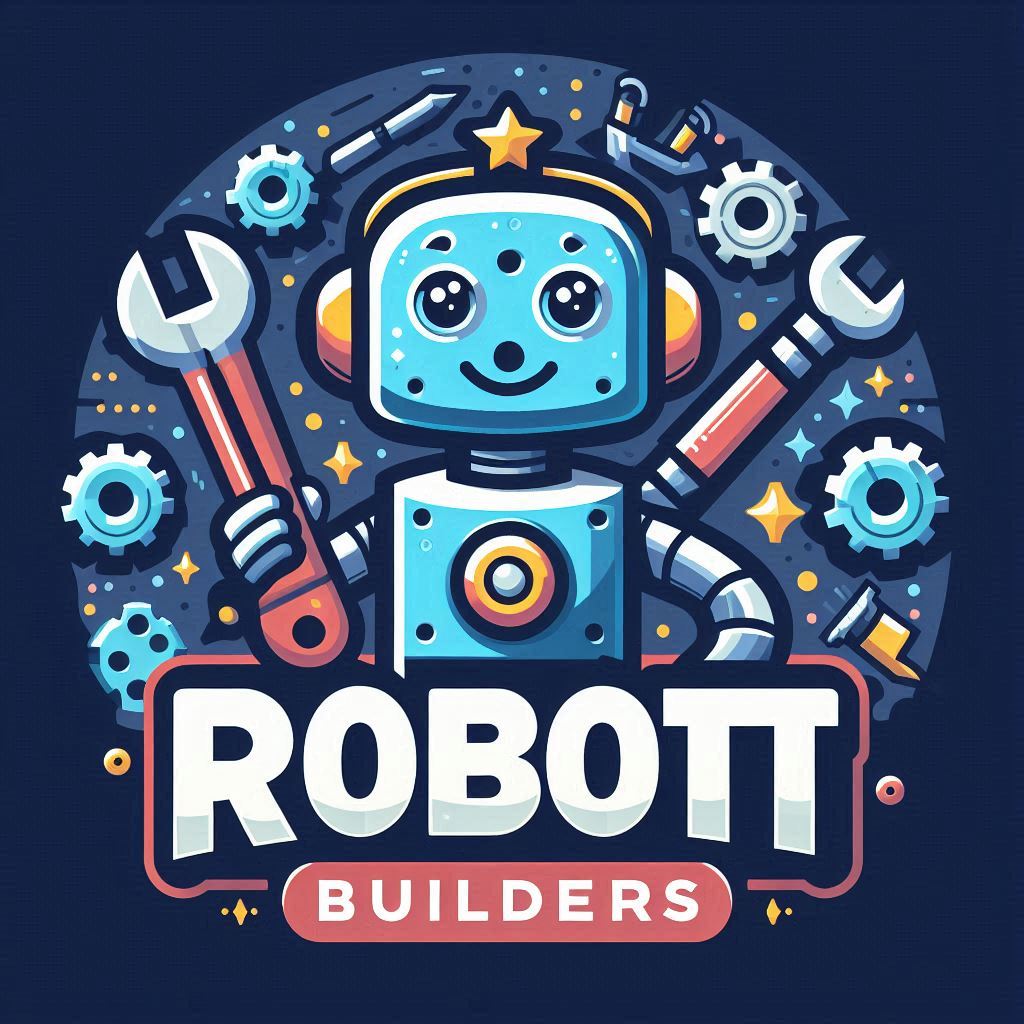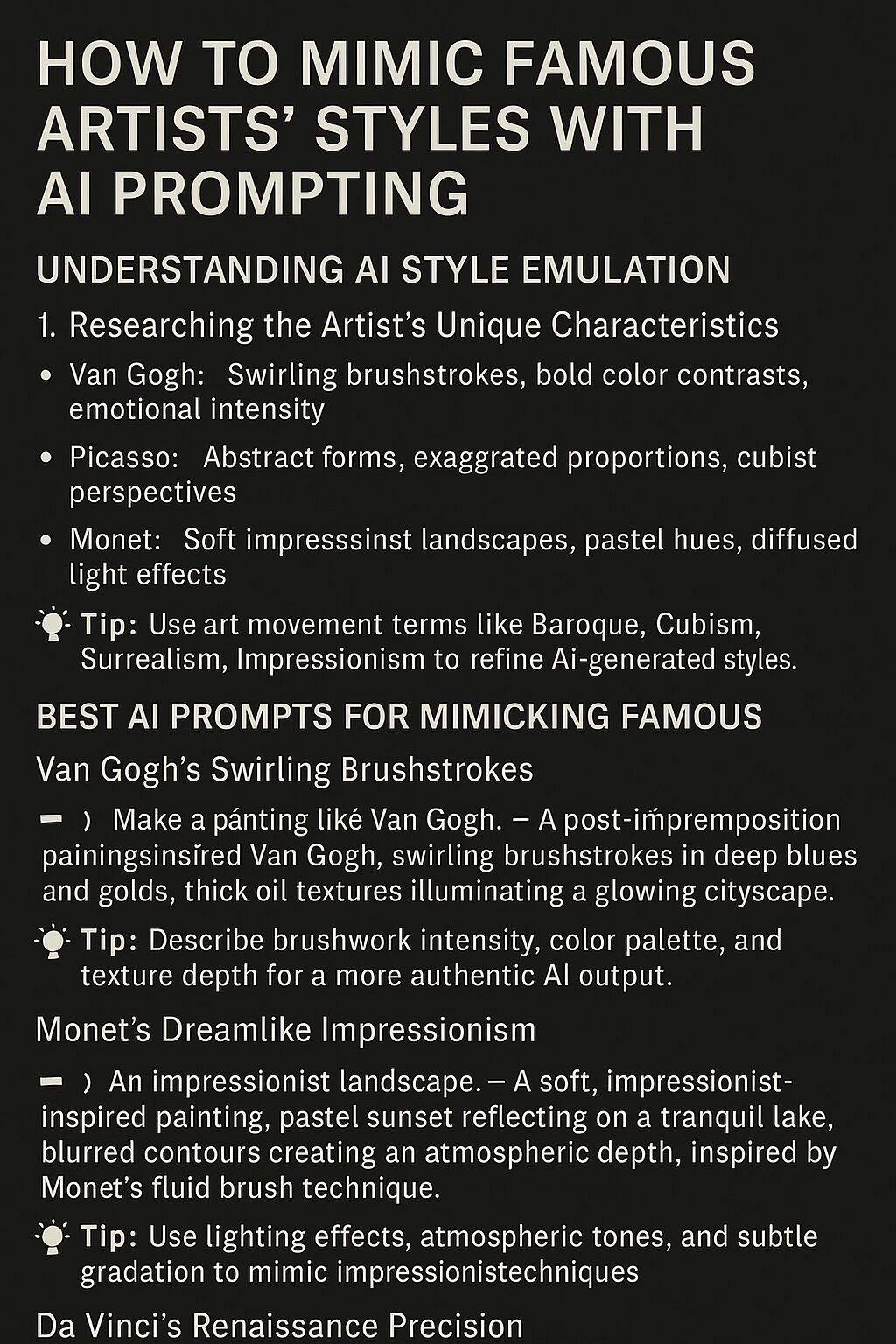Introduction
Artificial intelligence has revolutionized digital creativity, allowing artists and designers to replicate iconic artistic styles with precision. Using AI tools like MidJourney, DALL·E, and Stable Diffusion, creators can generate Van Gogh-inspired brush strokes, Picasso-style cubism, or Da Vinci-level realism with the right prompts.
This guide explores how to craft AI prompts that effectively mimic the styles of famous artists, ensuring high-quality, artistic, and SEO-optimized digital images.
🎨 Understanding AI Style Emulation
1. Researching the Artist’s Unique Characteristics
Before crafting an AI prompt, study the defining elements of the artist’s work: ✅ Van Gogh → Swirling brushstrokes, bold color contrasts, emotional intensity ✅ Picasso → Abstract forms, exaggerated proportions, cubist perspectives ✅ Monet → Soft impressionist landscapes, pastel hues, diffused light effects
💡 Tip: Use art movement terms like Baroque, Cubism, Surrealism, Impressionism to refine AI-generated styles.
🖌️ Best AI Prompts for Mimicking Famous Artists
2. Van Gogh’s Swirling Brushstrokes
🚫 “Make a painting like Van Gogh.” ✅ “A post-impressionist painting inspired by Van Gogh, swirling brushstrokes in deep blues and golds, thick oil textures illuminating a glowing cityscape.”
💡 Tip: Describe brushwork intensity, color palette, and texture depth for a more authentic AI output.
3. Picasso’s Cubist Masterpieces
🚫 “A Picasso-style artwork.” ✅ “A bold cubist composition, fragmented geometric faces in vibrant reds and blues, dynamic abstract forms intersecting in an asymmetrical pattern.”
💡 Tip: Define angular distortions, high-contrast colors, and multidimensional perspectives for stronger AI accuracy.
4. Monet’s Dreamlike Impressionism
🚫 “An impressionist landscape.” ✅ “A soft, impressionist-inspired painting, pastel sunset reflecting on a tranquil lake, blurred contours creating an atmospheric depth, inspired by Monet’s fluid brush technique.”
💡 Tip: Use lighting effects, atmospheric tones, and subtle gradation to mimic impressionist techniques.
5. Da Vinci’s Renaissance Precision
🚫 “A classical Renaissance portrait.” ✅ “A Renaissance-style oil painting, a noblewoman in detailed fabric, soft sfumato shading, deep brown tones evoking Da Vinci’s masterful realism.”
💡 Tip: Mention historical influences (Baroque, Neoclassicism, Romanticism) to enhance realism in AI-generated classical portraits.
🚀 SEO Optimization for AI-Generated Art
For higher search visibility, optimize AI-generated artwork with structured SEO techniques: ✅ Keyword Optimization: “AI-generated Van Gogh-style painting, cubist digital art, impressionist AI-generated artwork.” ✅ Metadata Tagging: Relevant keywords in alt text, image descriptions, and titles. ✅ Long-Tail Keywords: “Hyper-detailed AI-generated painting replicating Monet’s dreamlike brushstrokes in pastel hues.”
🎨 Conclusion
AI-generated art allows creators to mimic the styles of legendary artists by using structured, detail-rich prompts. Whether replicating Van Gogh’s expressive strokes, Picasso’s geometric cubism, or Monet’s serene impressionism, fine-tuning descriptive inputs ensures high-quality AI-generated masterpieces.

